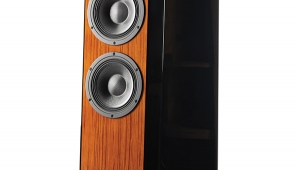| Columns Retired Columns & Blogs |
The way I read Fig.4, the anechoic FR plot, it seems like the Sasha V is -3db on the low end at ~40 Hz.
So this would seem to indicate one needs a subwoofer. Unless I missed it, I don't see any comments in the review from Sasha in re his impressions about the low bass (except for some comments about placement relative to the walls).

















































